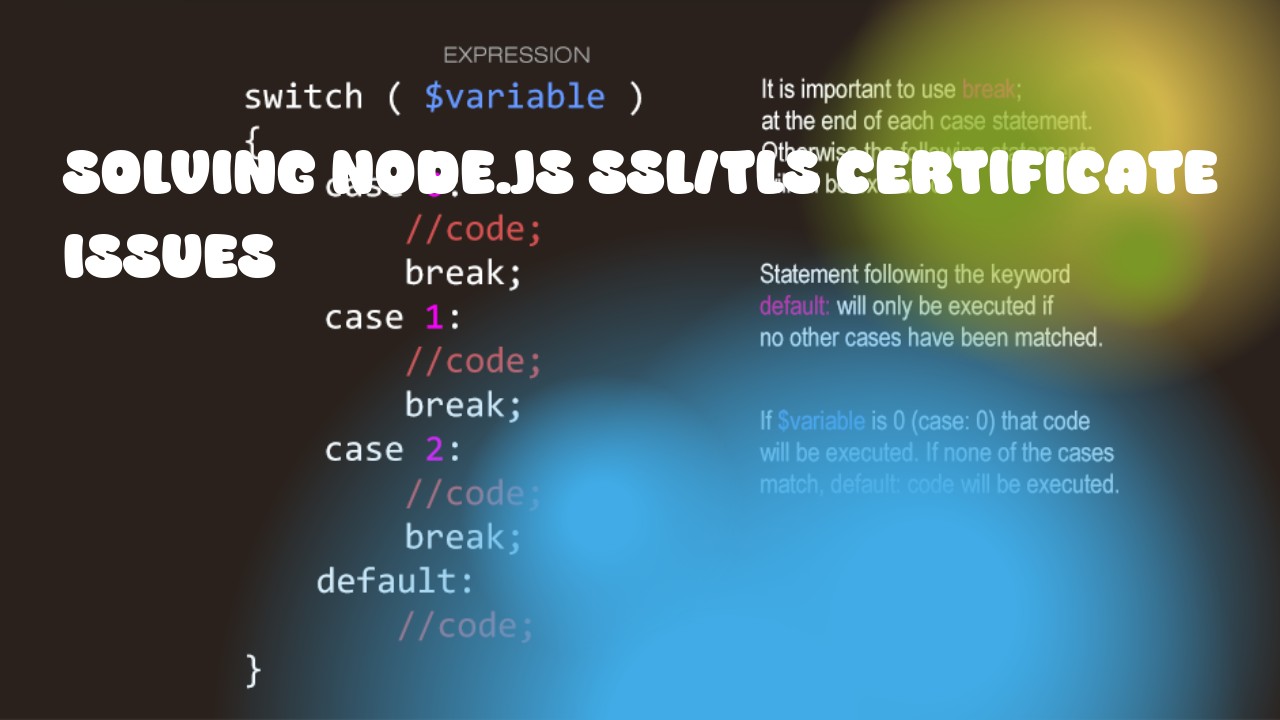Resolving SSL/TLS certificate issues in Node.js involves various steps, including obtaining the necessary certificates, configuring your server to use them, and troubleshooting any problems that may arise during this process. Here are some general steps you can follow:
-
Obtaining Certificates:
-
Self-signed certificates: You can create a self-signed certificate for testing purposes using OpenSSL or other similar tools. However, be aware that self-signed certificates are not trusted by default and may cause security risks in production environments.
-
Certificate authorities (CAs): If you want to get an official SSL/TLS certificate from a CA such as Let's Encrypt, you can follow the instructions provided by the CA for obtaining a certificate.
-
-
Configuring Your Server:
- Use HTTPS in your Node.js server: You can use the
httpsmodule built into Node.js to create an HTTPS server using the certificates obtained in the previous step. Here is an example of how you can configure it:const https = require('https'); const fs = require('fs'); const options = { key: fs.readFileSync('/path/to/your/private-key.pem'), cert: fs.readFileSync('/path/to/your/certificate.pem') }; https.createServer(options, (req, res) => { res.writeHead(200); res.end('Hello, world!'); }).listen(443); - Use the
httpspackage: Thehttpspackage is a wrapper around the nativetlsmodule that provides additional features such as secure renegotiation and SNI (Server Name Indication). You can use it to create an HTTPS server using the certificates obtained in the previous step. Here is an example of how you can configure it:const https = require('https'); const options = { key: fs.readFileSync('/path/to/your/private-key.pem'), cert: fs.readFileSync('/path/to/your/certificate.pem') }; const server = https.createServer(options, (req, res) => { res.writeHead(200); res.end('Hello, world!'); }); server.listen(443, () => { console.log('HTTPS Server running on port 443'); }); - Use
http2module: Thehttp2module provides a modern HTTP/2 protocol implementation in Node.js that includes support for SSL/TLS. You can use it to create an HTTPS server using the certificates obtained in the previous step. Here is an example of how you can configure it:const http2 = require('http2'); const options = { key: fs.readFileSync('/path/to/your/private-key.pem'), cert: fs.readFileSync('/path/to/your/certificate.pem') }; const server = http2.createSecureServer(options, (req, res) => { res.end('Hello, world!'); }); server.listen(443, () => { console.log('HTTP/2 Server running on port 443'); });
- Use HTTPS in your Node.js server: You can use the
-
Troubleshooting:
- Check the certificate and key files: Make sure that the certificate and key files are properly formatted and contain valid information. You can use tools such as OpenSSL to check the validity of your certificates.
- Use the
opensslcommand-line tool: Theopensslcommand-line tool provides a variety of utilities for working with SSL/TLS certificates, private keys, and other cryptographic materials. You can use it to verify that the certificate and key files are properly formatted and contain valid information. - Check the server configuration: Make sure that your server is configured correctly to use the certificates obtained in the previous step. You can check this by examining the server's logs for any errors related to SSL/TLS or certificate validation.
Remember that obtaining and configuring an SSL/TLS certificate involves several steps and may require additional expertise depending on your specific needs. If you have questions about these steps, I would be happy to provide more detailed guidance.

